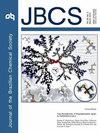砂岩和碳酸盐岩中有机酸掺杂油和低-高盐水对润湿性蚀变的评价
IF 1.3
4区 化学
Q3 CHEMISTRY, MULTIDISCIPLINARY
引用次数: 0
摘要
世界范围内可获得的石油储量在地质学上主要基于沉积岩和碳酸盐岩,而储层的性能取决于每种岩石的内在性质及其对润湿性变化的响应。近年来,利用低矿化度盐水改变润湿性来提高采收率是一种环保、低投资的方法,但采收率过程的机理尚未达成一致。因此,本研究的目的是研究与粉状储层岩石样品表面与周围流体相互作用相关的润湿性过程。在三种不同条件下对储层表面(砂岩、方解石和白云岩)进行了评价。碳酸盐岩中吸附油的总量是砂岩中的两倍。对白云石和方解石有机组分解吸步骤的热重分析表明,高盐水浓度处理有利于油的解吸,而对砂岩则相反。这表明碳酸盐岩对有机相的吸附比砂岩更强。本文章由计算机程序翻译,如有差异,请以英文原文为准。
Evaluation of Wettability Alteration by Oil Doped with Organic Acid and Low-High Brine Solutions in Sandstone and Carbonate Rocks
Petroleum reserves available worldwide are geologically based mainly on sedimentary and carbonate rocks, and the reservoir performance depends on the intrinsic properties of each rock and their response to changes in wettability. Recently, the change in wettability with low-salinity brine has been used to improve the oil recovery, which is an environmentally friendly and low investment, but there is no unanimity about the mechanisms of oil recovery process. Therefore, the aim of this study is to investigate the process involved in the wettability associated with interactions between the surface of powdered reservoir rock samples and the surrounding fluids. The reservoir rock surface (sandstone, calcite and dolomite) was evaluated under three different conditions. The total amount of adsorbed oil on aged samples was twice as high in carbonate rocks as in sandstone. The thermal gravimetric analysis (TGA) for the desorption steps of the organic fraction on dolomite and calcite indicates that the treatment under high brine concentration favored the oil desorption and the opposite result was observed for sandstone. This behavior suggests that carbonate rocks adsorb more strongly the organic phase compared to sandstone.
求助全文
通过发布文献求助,成功后即可免费获取论文全文。
去求助
来源期刊
CiteScore
2.90
自引率
7.10%
发文量
99
审稿时长
3.4 months
期刊介绍:
The Journal of the Brazilian Chemical Society embraces all aspects of chemistry except education, philosophy and history of chemistry. It is a medium for reporting selected original and significant contributions to new chemical knowledge.

 求助内容:
求助内容: 应助结果提醒方式:
应助结果提醒方式:


